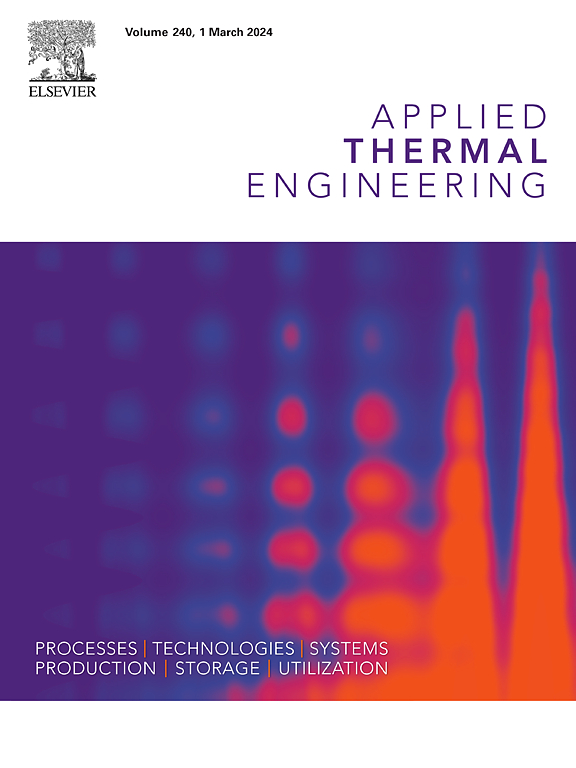Methyl ricinoleate droplet impact on a high temperature stainless steel surface: Dynamic behavior and heat transfer
IF 6.1
2区 工程技术
Q2 ENERGY & FUELS
引用次数: 0
Abstract
The rapid and uniform heating of the feedstock plays a key role in pyrolysis processes. Dispersing methyl ricinoleate (MR) into spray droplets can improve the heating speed and uniformity in the pyrolysis process, which is of great benefit to the yield of the target product. This article describes the results and mechanisms of single MR droplet impacting on a heated stainless steel surface at different temperatures (385 ∼ 520 °C). Two non-contact measurement techniques, including a high-speed camera and a thermal infrared imager, were used to record the dynamic behavior and heating effects of the MR droplet on the heated surface at different temperatures, respectively. Four representative impingement states were observed during droplet impact: adhesion rebound, adhesion rebound with breakup, bouncing, and bouncing with breakup. As a result, a comprehensive map was created, based on a dimensionless analysis, describing the relationships between the typical states. Regarding the quantitative analysis, the maximum spreading factor and the dimensionless droplet residence time were linearly related to the 0.336 and 0.389 powers of the Weber number, respectively. By calculating the average heat flux of a droplet, it was found that it is related to the stainless steel surface temperature, the droplet saturation temperature, and the Reynolds number. The transient temperature at the surface of the MR droplet was measured to quantify the effectiveness of the heating. This study could provide a theoretical basis for the regulation and optimization of MR pyrolysis conditions.
蓖麻油酸甲酯液滴对高温不锈钢表面的影响:动态行为与热传递
原料的快速均匀加热在热解过程中起着关键作用。将蓖麻油酸甲酯(MR)分散成喷雾液滴可提高热解过程中的加热速度和均匀性,这对目标产品的产量大有裨益。本文介绍了单个 MR 液滴在不同温度(385 ∼ 520 °C)下撞击加热不锈钢表面的结果和机理。文章采用了两种非接触式测量技术,包括高速相机和热红外成像仪,分别记录了不同温度下磁共振液滴对加热表面的动态行为和加热效应。在液滴撞击过程中观察到了四种具有代表性的撞击状态:附着反弹、附着反弹与破裂、反弹和反弹与破裂。因此,在无量纲分析的基础上绘制了一张综合图,描述了典型状态之间的关系。在定量分析方面,最大扩展因子和无量纲液滴停留时间分别与韦伯数的 0.336 和 0.389 次方成线性关系。通过计算液滴的平均热通量,发现它与不锈钢表面温度、液滴饱和温度和雷诺数有关。测量了 MR 液滴表面的瞬态温度,以量化加热的效果。这项研究可为调节和优化 MR 热解条件提供理论依据。
本文章由计算机程序翻译,如有差异,请以英文原文为准。
求助全文
约1分钟内获得全文
求助全文
来源期刊

Applied Thermal Engineering
工程技术-工程:机械
CiteScore
11.30
自引率
15.60%
发文量
1474
审稿时长
57 days
期刊介绍:
Applied Thermal Engineering disseminates novel research related to the design, development and demonstration of components, devices, equipment, technologies and systems involving thermal processes for the production, storage, utilization and conservation of energy, with a focus on engineering application.
The journal publishes high-quality and high-impact Original Research Articles, Review Articles, Short Communications and Letters to the Editor on cutting-edge innovations in research, and recent advances or issues of interest to the thermal engineering community.
 求助内容:
求助内容: 应助结果提醒方式:
应助结果提醒方式:


